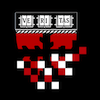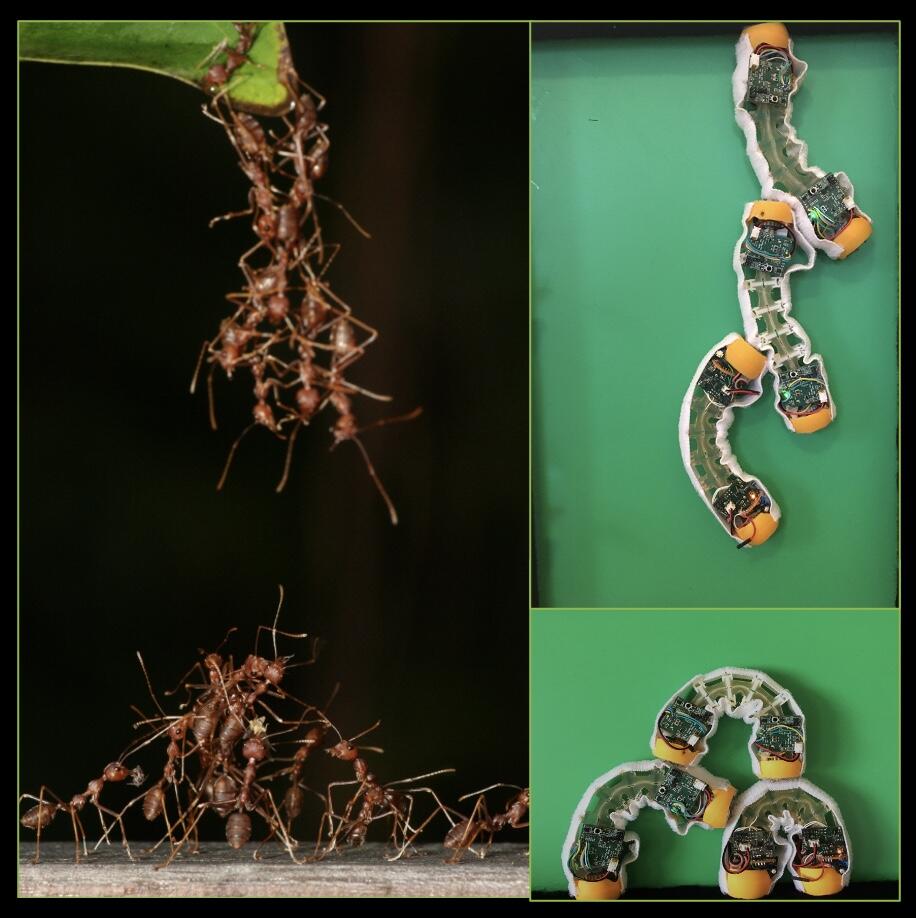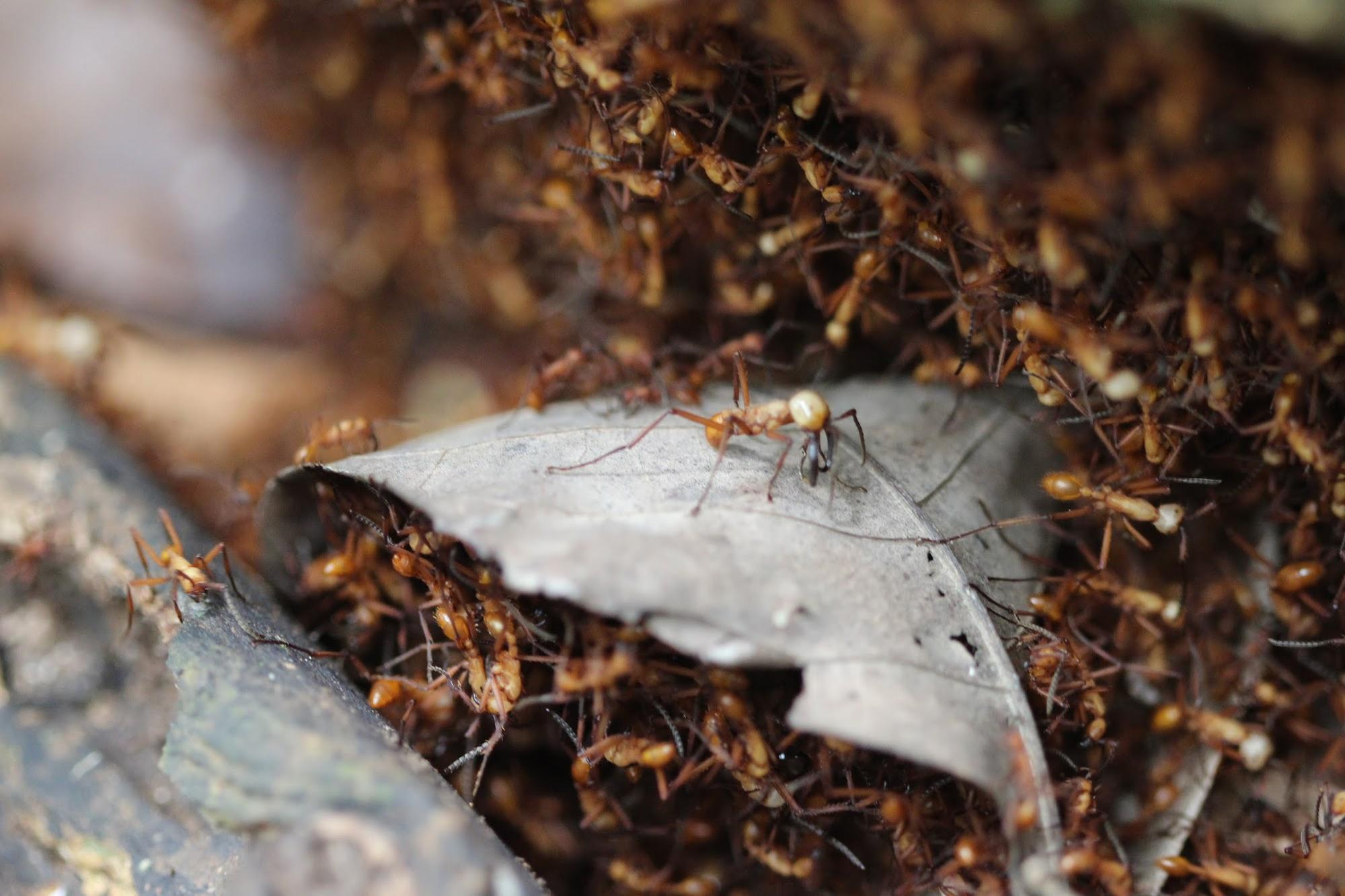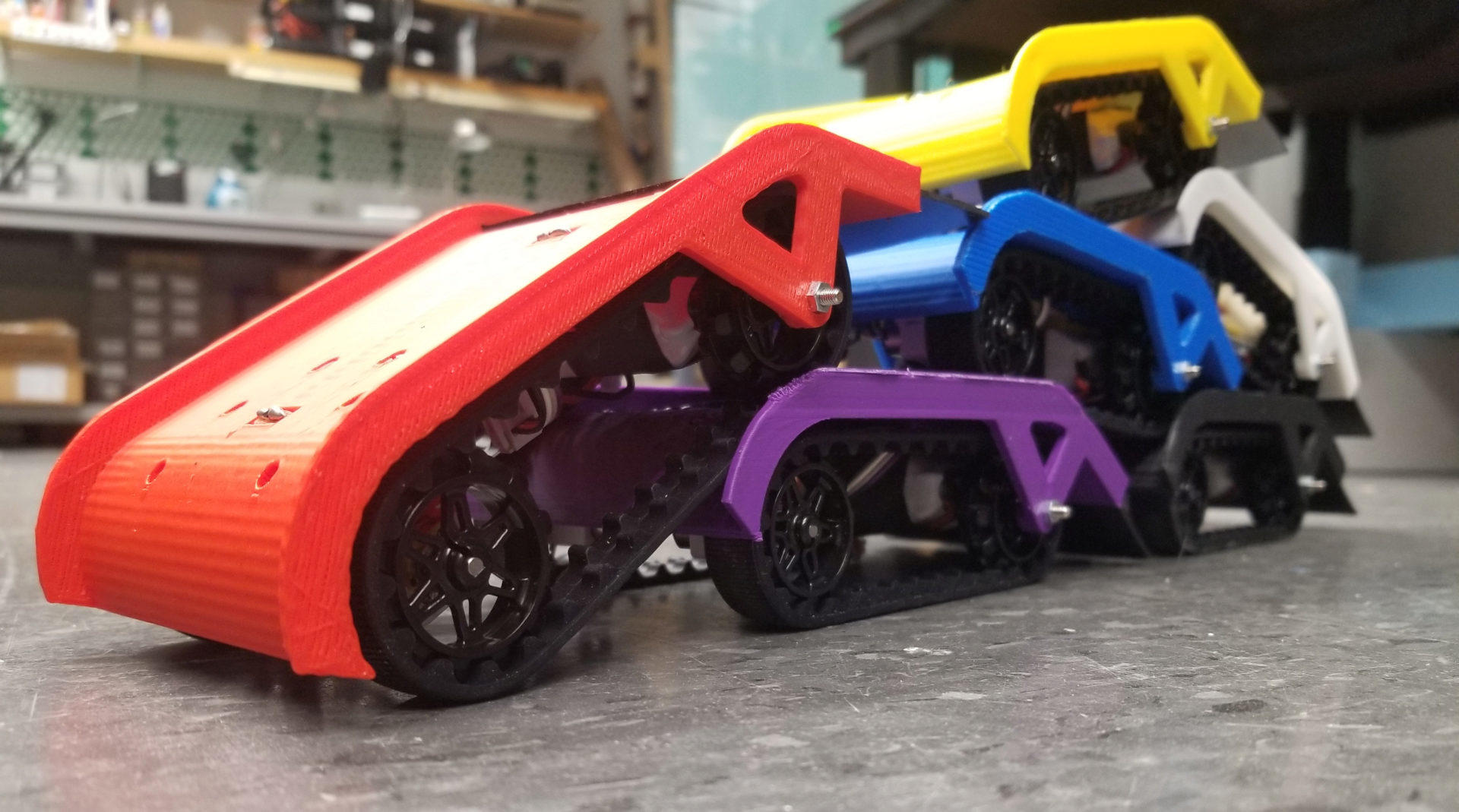Self-Assembling Soft Climbing Robots, inspired by Army Ant Colonies.
Social insect colonies, like human societies, build some of the most complex and diverse physical structures to house their population, store their goods, and protect their young. One of the most incredible examples is structures made through self-assembly, out of the bodies of the insects themselves. Army ants colonies (genus Eciton), for example, are able to form towers, bridges, rafts, and even their full nest (bivouacs) from their bodies. Unlike traditional human structures, these self-assembled structures are soft/compliant, temporary, and adaptive: army ants create bridges and ramps that form in response to congestion, repair them when broken, change size based on traffic levels, and disassemble when no longer needed. Army ants form living architectures that allow them to master their environment. They inspire us to envision artificial ones operating on similar principles, e.g. a swarm of independent agents acting together to build large-scale structures as needed, reacting autonomously to the local environment.
The goal of the Eciton robotica project is to design a self-assembling robot swarm, inspired by Armt Ant self-assembly. This project has three parts:
- Soft Climbing Robot Design: We have designed a novel soft climbing robot that uses a compliant cable-driven body and simple flipping locomotion to autonomously climb many surface angles and transition between planes, completely autonomously and untethered (IROS 2017). These robots can climb over one another, using custom grippers to connect to velcro skins, thus forming organic "soft" structures without complex docking requirements (New! ICRA 2020). While climbing, the robots are able communicate with each other using vibration, inspired by stridulation communication in ants.
- Adaptive Self-Assembly Algorithms: Using biological hypotheses for self-assembly ("congestion response") and physics-based simulators, we have shown a simple self-assembly rule that can create self-stabilizing bridges. These simple robot rules mimic the surprising adaptive properties of natural army ants bridges -- forming larger bridges in more difficult terrains and higher traffic, and automatically dissolving when traffic is removed (New! ICRA 2020).
- Army Ant Bridge Studies: We travelled to Panama (2016) with our biology collborators, to conduct new experiments on army ant bridge and bivouac formation. See our biological collectives page for more information.
To the best of our knowledge, Eciton robotica is one of the first demonstrations of a fully autonomous and untethered soft climbing robot that can self-assemble.
Robot swarms that could self-assemble could accomplish remarkable tasks and solve problems in their environment, e.g. creating bridges to navigate complex terrain, plugs to repair structural breaches, or supports to stabilize a failing structure. Such systems could enable robots to operate in complex, unpredictable settings, such as in natural disaster areas, where human presence is dangerous or problematic. Robots forming temporary structures also would be reusable; as structures becomes unnecessary, robots can disassemble and become building blocks for new ones. Finally bio-inspired robots such as Eciton robotica also provide us with a synthetic way to test biological hypotheses about collective intelligence.
MOVIES: SSR 3DSwarms Youtube Channel and our Panama Eciton hamatum Video
PEOPLE: Melinda Malley (PhD 2020, lead), Dr. Bahar Haghighat (current), Lucie Houel (EPFL Masters 2019), Prof Mike Rubenstein (faculty@northwestern); also see related robotics work by Lucian Cucu (EPFL Masters 2015) and Julia Ebert (current PhD). Biology collaborators: Dr. Helen McCreery (JSMF Fellow) and Prof. Simon Garnier (faculty@NJIT).











